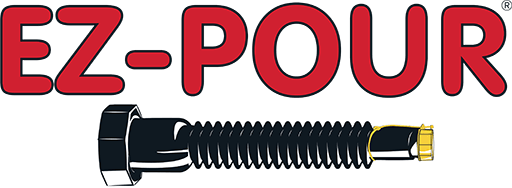There’s a good chance that you recently bought a brand-new gas can only to find out that it’s more difficult to pour than your last one. What changed over the years? According to the Spruce, the EPA requires new gas cans, a.k.a portable fuel containers, to be made with “a single, self-venting opening for filling and pouring with no separate vents or openings.” This means that the small vent on the back of a can is no longer around. You may now find yourself asking the question: Does my gas can need a vent? Let EZ-POUR® answer that for you:
The Purpose of a Vent
Vents are openings that allow gases or liquids to flow in and out of a container. Originally, a separate vent came attached to a gas can to release any air that entered while pouring. This decrease in pressure helped to maintain a steady flow of gasoline. The difference today is that the can’s spout is essentially tasked with pouring and venting at the same time. Pressure builds inside the can as the air becomes trapped and that results in gasoline splashing out if poured too quickly.
Sticking to Your Old Gas Can
So for best results when fueling up with a gas can, it does need a vent. That’s why you should stick to your old one. Have a broken spout or a damaged vent? Upgrade to an EZ-POUR® replacement fuel spout and vent kit, which comes with a spout and cap, ½” replacement push-in vent, second base cap, and flame arrester. Installation of a vent is easy, too.
Installing a New Vent

If your current vent is deteriorating from age or other damages, replace it by following these three steps:
- Empty the gas can and dry the inside.
- Pry out the old vent with a screwdriver.
- Push the new vent in and close the lid when not in use.
If your old gas can never had a vent, install one with these five steps:
- Empty the gas can and dry the inside.
- Drill a ½” hole in back topside of jug using a step drill bit, tapered reamer, paddle bit, or wood speed bit.
- Push the new vent in and close the lid when not in use.
- Clean out the can to remove leftover shavings from drilling.
- If the vent requires sealer use “Seal all.” (Never use silicone rubber!)
The Birth of EZ-POUR® Spouts
Another frustrating regulation is that a can’s nozzle has to be spring-loaded so that it can close automatically. Realizing that he was not the only person suffering from these changes, EZ-POUR® owner Mark Wyne decided to invent the EZ-POUR® Universal Fuel & Water Jug Spout.
Someone wise once said, “If it ain’t broke, don’t fix it.” That goes for your old gas can, too. If it does break, however, see if you can fix it by adding a replacement spout and vent.
Buy yours online at ezpourspout.com.
